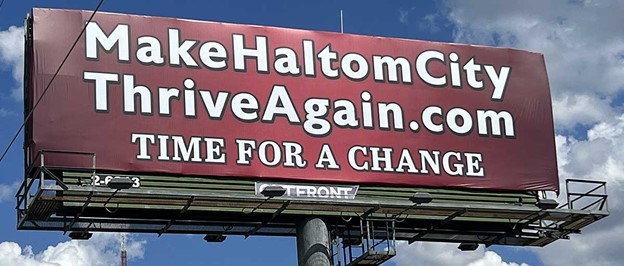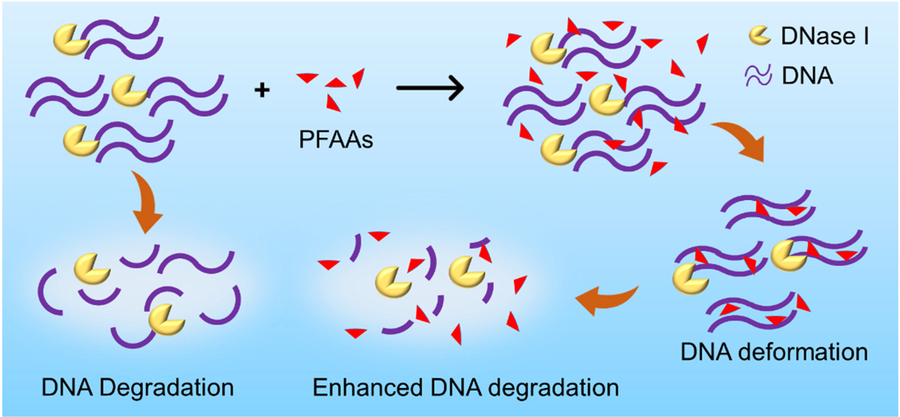HUBA points out that vacant buildings in Haltom City attract crime, diminish quality of life and lower property values.
HALTOM CITY, TX, April 25, 2023 /24-7PressRelease/ — A simple Google search asking “Do vacant buildings attract crime?” makes it clear. Study after study has found that crime increases substantially when property is allowed to remain vacant or abandoned in inner city areas.
In the South and Central neighborhoods of Haltom City, this issue needs attention now. A recent business census showed that Haltom City’s US 377 corridor has a whopping 29% vacancy rate in the area from NE Loop 820 to Belknap. Additionally, inner city neighborhoods that were once known for their balance of homes and businesses are experiencing an increase in vacant buildings and a corresponding rise in drugs, theft and other criminal activity, according to multiple comments on Facebook from Haltom City citizens. To be fair, one resident, Jayson Steele, who is also a city employee reporting directly to the city manager, noted that he did not believe that vacant buildings led to increased crime.
According to the Haltom United Business Alliance (HUBA), city leadership should work urgently for the revitalization of South and Central Haltom and recognize the connection between empty buildings and crime. Charlie Roberts, a candidate for City Council Place 1, said, “My eyes see the vacancies, and I don’t need a study to know that the corridor has been in decline for some time. I want to make sure the council takes this seriously and makes a plan ASAP to bring in more small businesses.” He added, “We also want the additional taxes, jobs, products and services more businesses will certainly bring.”
There are many cities around the country that have already had success in abating crime by dealing with vacant properties. For example, the Mayor’s Task Force on Safe Communities in Dallas recently met to specifically discuss vacant lots and abandoned buildings in the Mill City neighborhood and submit recommendations based on results seen in other cities across the country. During the meeting, Mayor Eric Johnson pointed out that Dallas had already seen a reduction in crime in places where such efforts had occurred over the past 3 years. Police Chief Eddie Garcia added that these types of efforts help the work of the police as well.
There is also a wide range of resources available on-line that explore the issues and/or offer suggestions on how to tackle the challenges being faced. If there are any doubts about whether vacant buildings increase crime, here are just two of many that can be found on-line for review:
The US Department of Justice published a study in the Journal of Criminal Justice that tested the hypothesis “The number of drug, property, and violent crimes is higher on blocks with abandoned residential buildings than on comparable blocks without abandoned buildings.” The study ultimately found that “Crime rates on blocks with open abandoned buildings were twice as high as rates on matched blocks without open buildings.”
The Journal of Research in Crime and Delinquency found in a 2019 study Understanding the Criminogenic Properties of Vacant Housing: A Mixed Methods Approach that abandoned properties attract or generate crime since they are seen as easy targets that provide cover for criminal activity. The study also concluded that “the removal of abandoned housing was associated with positive changes in crime overall.”
When it comes to ideas on how to address the issues at hand, the US Dept. of Housing and Urban Development (HUD) has a resource called Vacant and Abandoned Properties: Turning Liabilities Into Assets which offers ideas and suggestions and includes a long list of resources (in footnote form) that link to other items of interest.
There is also Texas Problem Properties Toolkit written by The Community Development Clinic at the University of Texas – School of Law “to help Texas communities address problems created by vacant and abandoned properties.” The toolkit asserts that vacant and abandoned properties “breed dumping, hazardous building conditions, drug activity, and other crimes” and reports that a study in Dallas “found that vacant and other problem properties have lowered property values by approximately $575 million, costing the city $4.3 million a year in lost property taxes.”
The ASU Center for Problem-Oriented Policing also has a toolkit of sorts. The Problem of Abandoned Buildings and Lots helps the reader analyze problems in their own city and offers ideas based on “what is known from research, evaluation and government practice.”
HUBA founder Ron Sturgeon is seriously concerned and says that the situation in Haltom City will only get worse if city leadership fails to act. In 2022, Ron started a movement called Make Haltom City Thrive Again to bring attention to the issues and call for city council members who will tackle the challenges faced. He also co-authored the book Keeping the Lights on Downtown in America’s Small Cities (original and 2nd Edition).
As part of the Make Haltom City Thrive Again campaign, Ron will send a free copy of the book to any Haltom City resident or business owner who requests one. To get a free copy, e-mail your name and address to [email protected]. Says Ron, “I hope you will join myself and others in this effort to revitalize Haltom City. I am a huge fan of this mighty city, and I want the best for our residents and businesses.”
About Haltom United Business Alliance
Haltom United Business Alliance (HUBA) wants to give members of Haltom City’s business community an advocate and to keep those businesses informed about issues that affect them. They want to make sure Haltom City is business friendly and nurtures small business growth, including automotive businesses in the industrial districts, and bring more restaurants including breweries and eventually a major grocery store to the city. New businesses and growth in existing businesses will create a stronger tax base which will allow the city to pay its first responders wages that are competitive with surrounding cities while improving Haltom City’s facilities and infrastructure. HUBA believes that the southern and central parts of the city need a revitalization plan, to prevent further degradation in those areas, and wants that to happen before the inner-city experiences increased crime and more blight. As retail and office uses are in decline, it’s more critical than ever to attract new businesses. They believe that such a plan requires a strong relationship and support of the business community. Anyone who owns a business in Haltom City is eligible to join HUBA. Dues are $20 annually or $50 for a lifetime membership, and membership is 100% confidential. To join, contact Joe Palmer at (682) 310-0591 or by email at [email protected]. Visit the group’s Facebook at Haltom United Business Alliance.
About Haltom City
Haltom City is a diverse, majority working-class city located between Dallas and Fort Worth in Tarrant County, TX. Haltom City is minutes from both the DFW Airport and Downtown Fort Worth with direct access to major highways including I-820 and SH-121. Due to an outdated and restrictive use matrix that discourages new business and deters growth, several areas of Haltom City have seen a decline in small businesses which provided goods and services and were a significant source of jobs, including the once-thriving automotive industry. However, Haltom City has the opportunity to reverse this trend and should prioritize development of inner-city land and vacant buildings, particularly in the major corridors close to the city’s center. The city is financially healthy with a capable manager and staff who would like to see diverse business development occur and need the support of the City Council to make it happen.
About Make Haltom City Thrive Again
The Make Haltom City Thrive Again website offers information and resources about its purpose and goals. For more on Sturgeon’s personal ideas and background, check out his book Keeping the Lights on Downtown in America’s Small Cities and watch the videos on his Facebook page. Ron is also the founder of the Haltom United Business Alliance (HUBA) which represents existing business interests in Haltom City and promotes growth of diverse businesses as well. HUBA is not a political action committee and does not endorse candidates. If/when Ron endorses candidates, he will do so on his own with the Make Haltom City Thrive Again organization.
https://www.ojp.gov/ncjrs/virtual-library/abstracts/abandoned-buildings-magnets-crime
https://popcenter.asu.edu/content/abandoned-buildings-and-lots-0
—
For the original version of this press release, please visit 24-7PressRelease.com here



